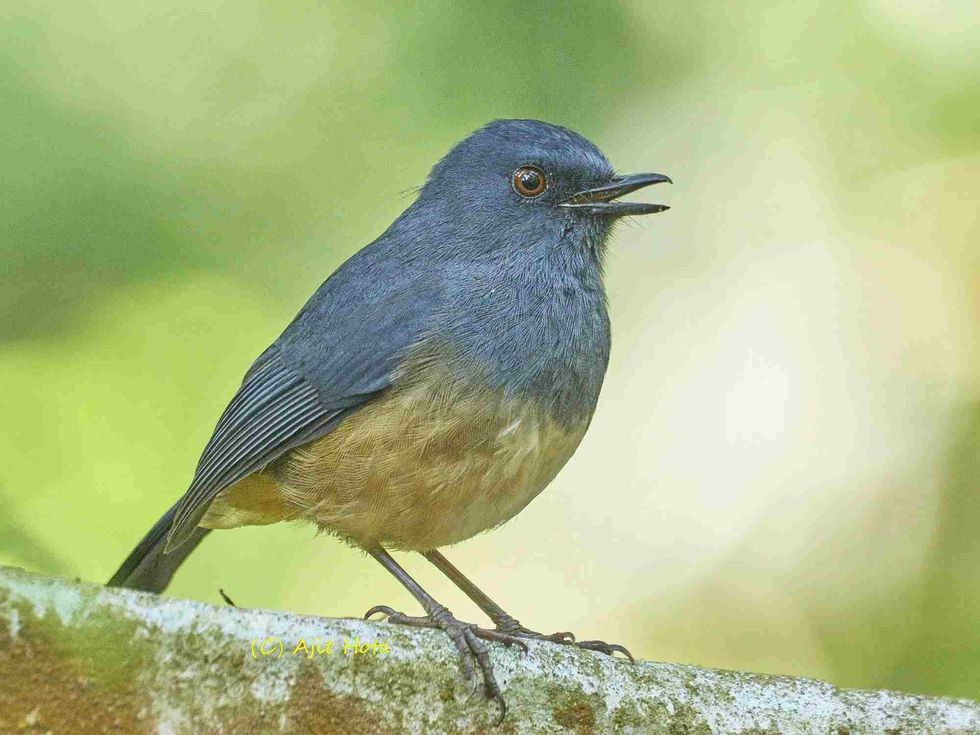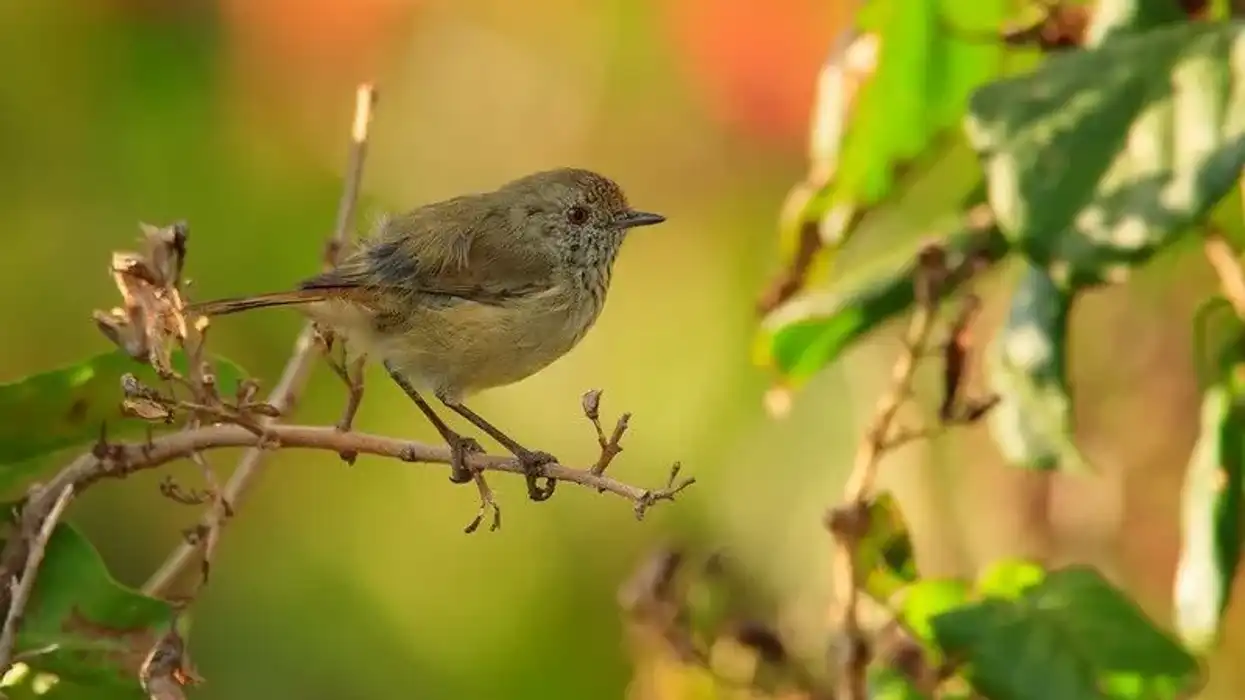The Nilgiri blue robin (Sholicola major) is an endangered bird in India. This bird was thought to be extinct until a group was discovered living on top of an uninhabited hilltop, preserved by thick forest and rugged terrain from human encroachment.
They have been rediscovered thanks to the fact that they fly up when disturbed during their nesting season between April and July each year.
Native to the wet and misty Nilgiri Hills region of southern India, this bird is prized for its beautiful colors. As a result, it has been introduced in many places around the world where there are suitable habitats including Europe, North America, and Africa as well as Australia.
The female Nilgiri blue robin (Sholicola major) lays two eggs between February and April that produce two chicks each time!
These birds use their spiny legs to walk on tree branches without fear, making them an important part of forest ecology as they are able to eat insects from leaves while also benefiting other species with their droppings (containing nutrients like nitrogen compounds) which form fertilizer when they fall back onto the soil below.
They have an unmistakable blue, almost indigo plumage and can be found in the Nilgiris mountain range south of Coimbatore. These birds like to fly at high altitudes which makes them susceptible to hunters with pellet guns who want their valuable feathers for their hats!
These robin multi-colored songbirds have dark blue plumage, white belly feathers, and a black tail with an orange tip.
For more relatable content, check out these rufous-backed robin facts and European robin facts for kids.
Nilgiri Blue Robin Interesting Facts
What type of animal is a Nilgiri blue robin?
The Nilgiri blue robin (Sholicola major) bird is a rare type of bird that lives on the hills in southern India.
What class of animal does a Nilgiri blue robin belong to?
Just like every other bird, including a giant cowbird, the Nilgiri blue robin (Sholicola major) belongs to the class Aves!
How many Nilgiri blue robins are there in the world?
The last time their population was counted, they numbered about two thousand. With such limited numbers and their territories being threatened by deforestation, it is important that we do our part to help them thrive!
Where does a Nilgiri blue robin live?
Nilgiri blue robin (Sholicola major) birds live primarily on the forested slopes of hills in southern India and are less inclined than other robins to venture into wetland environments where they could be at risk from predators like tricolored herons or common kingfishers.
What is a Nilgiri blue robin's habitat?
Nilgiri blue robin (Sholicola major) birds are an endemic Indian species. They exclusively live in south India’s southernmost region of Tamil Nadu near the Western Ghats mountain range. With brilliant colors reminiscent of their wonderful environment, this robin has adapted over time to cope well in the high altitude forests where it commonly nests!
Who do Nilgiri blue robins live with?
Nilgiri blue robins (Myiomela major) have a unique way of life. They often share a home or nest made by another species while also interacting with others outside this group.
How long does a Nilgiri blue robin live?
The Nilgiri blue robin bird lives for around 15 years in the wild, but will often live up to 25-30 years when cared for in captivity.
How do they reproduce?
The Nilgiri blue robin bird (Myiomela major) is a small, active bird. In this species' reproduction cycle, one female lays two eggs at a time, and the male assists in incubating them for around 12 days before they hatch.
What is their conservation status?
The IUCN conservation status of the Nilgiri blue robin (Myiomela major) is Endangered.
Nilgiri Blue Robin Fun Facts
What do Nilgiri blue robins look like?
Nilgiri blue robins (also known as Nilgiri sholakili birds) are a type of bird that is commonly seen in the mountains. They have blue feathers and red beaks, which makes them stand out from other birds.
They can't fly well but, instead, walk on their feet with very little effort. This means you may find these beautiful creatures walking all over the mountain paths so make sure to go hiking if you want to catch sight of one for yourself!
How cute are they?
These Nilgiri slaty blue robins (also known as Nilgiri sholakili birds) are very cute and adorable birds! Their blue feathers really make them stand out.
How do they communicate?
The Nilgiri slaty blue robin bird (Nilgiri sholakili bird) communicates through various vocalizations that include high pitched singing, chattering, and twittering sounds that are made when feeding young birds. There has been some debate on whether this type of communication may be related to territorial disputes or not.
How big is a Nilgiri blue robin?
With their long, narrow, and pointed wingspan of about 3 in (8-10 cm) in length, these birds fly swiftly through high altitudes on a feathery ride.
How fast can a Nilgiri blue robin fly?
Nilgiri blues (Myiomela major) are the fastest of all blue robins. They can fly as fast as 30 mph (45-50 kph).
How much does a Nilgiri blue robin weigh?
The blue-feathered Nilgiri blue robin bird (Myiomela major) of the Nilgiri hills weighs an average of 3-6 lb (1.3-2.7 kg), so it's no wonder that the Nilgiri sholakili can fly! A male will typically weigh more than a female.
What are their male and female names of the species?
Male and female Myiomela major birds of the genus Sholicola and family Muscicapidae are simply referred to as Nilgiri sholakili birds!
What would you call a baby Nilgiri blue robin?
The babies of this Myiomela major species are popularly referred to as Nilgiri sholakili babies or chicks.
What do they eat?
These incredible creatures love catching frogs and insects as well as lizards or other bugs for feeding purposes!
Are they dangerous?
No, birds from the species Myiomela major are not harmful to humans in any way. In fact, they are very friendly and calm when around a human population in their distribution range.
Would they make a good pet?
Any bird of the species Myiomela major from the family Muscicapidae could be a great pet because they are not noisy. However, they are not commonly kept in captivity. Their feathers make excellent pillows and blankets, as the colors of their tails are adorable!
Did you know...
The Nilgiri slaty blue robin bird might be one of the most interesting creatures in its distribution range in India due to their striking appearance as well as their songs that can last up to an hour-long during the breeding season!
Are Nilgiri blue robins endemic?
This Old World species is endemic to southern India, but there is evidence that they may have originated from Sri Lanka. Scientists can't be sure yet because of the limited information available about them due to their rarity and their remote habitat. The breeding pattern of this bird is also slightly different from that of other robins!
However, the species also shares some similarities to other robin species, like their diet (fruit-based) and their habitat preference for temperate habitat regions during winter months and during the breeding season when food is scarce.
Comparisons with similar robins
The Nilgiri blue robin is an understated gem! Compared to other related species of robins of the same genus, its distinct features come out even brighter. This species' feathers are a deep metallic slaty blue color with hints of violet that shimmer in the sunlight for all to see and admire.
Here at Kidadl, we have carefully created lots of interesting family-friendly animal facts for everyone to discover! Learn more about some other birds from our sea eagle facts and white gyrfalcon facts pages.
You can even occupy yourself at home by coloring in one of our free printable Nilgiri blue robin coloring pages.









